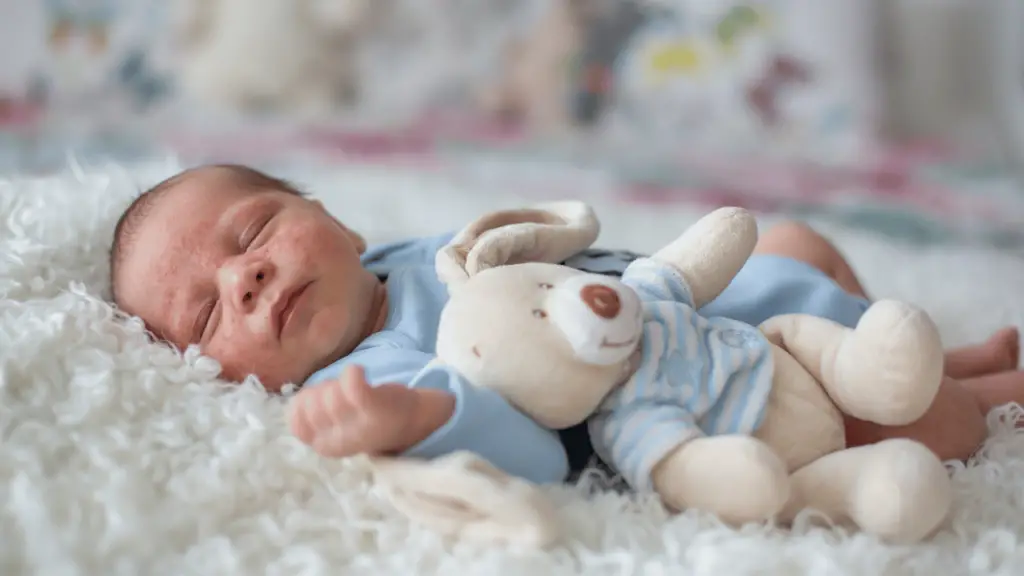Babies are one of the most beautiful creations of God, and when they get rashes, it is like a nightmare. Many of us are clueless about how to treat and how to stay away from these rashes. As a parent, seeing a rash on your baby’s skin can be concerning. What causes a rash on a baby’s skin? It can be caused by a variety of factors, including allergic reactions, infections, and environmental factors. In this article, we will discuss the common causes of rashes on baby skin, their symptoms, and treatments.
What is baby skin like?
When you think of baby skin, you might imagine it to be soft, smooth, and flawless. And while infant skin does have some unique characteristics, it is also subject to many of the same issues as adult skin.
Baby skin is much thinner than adult skin. This makes it more susceptible to damage and irritation. It also means that babies are more likely to develop rashes and other skin problems.
Why are babies prone to rashes?
There are a few reasons why babies are prone to rashes. First, their skin is thinner and more sensitive than adults, so they’re more likely to react to things like detergents, fabrics, and even certain foods. Second, they tend to sweat more, which can irritate the skin and lead to rashes. Third, they have a lot of folds in their skin (such as the neck, under the arms, and in the groin), which can trap moisture and bacteria, leading to irritation and rashes. Finally, babies tend to put their hands and other objects in their mouths, which can transfer bacteria and other irritants to their skin.
Causes of rashes on Baby Skin:
1. Diaper Rash:
Diaper rash is a common condition that affects many babies. It is caused by prolonged exposure to wet or soiled diapers, and it can be exacerbated by friction and heat. The rash appears as red, inflamed skin around the diaper area.
2. Eczema:
Eczema, also known as atopic dermatitis, is a chronic skin condition that often begins in infancy. It is characterized by red, itchy patches of skin that can become dry and scaly. Eczema is often triggered by irritants, such as harsh soaps and detergents, as well as allergies.
3. Heat Rash:
Heat rash, also known as prickly heat, is caused by the blockage of sweat ducts. It appears as small, red bumps on the skin, and it is most common in areas where sweat accumulates, such as the neck, armpits, and groin.
4. Measles:
Measles is a highly contagious viral infection that can cause a rash, along with other symptoms, such as fever and cough. The rash typically appears on the face and spreads to other parts of the body.
5. Fifth Disease:
The fifth disease, also known as erythema infectiosum, is a viral infection that causes a distinctive rash on the face, which can spread to the trunk and limbs. The rash appears as a bright red, lacy rash.
6. Hand, Foot, and Mouth Disease:
Hand, foot, and mouth disease (HFMD) is a viral infection that commonly affects young children. It causes a rash on the hands, feet, and mouth, and it can also cause fever and other flu-like symptoms.
Symptoms of Rash on Baby Skin:
The symptoms of a rash on the baby’s skin depend on the underlying cause. However, common symptoms include:
- Redness
- Inflammation
- Itching
- Bumps or blisters
- Scaling or flaking skin
- Pain or discomfort
- Fever (in some cases)
How to treat rashes on baby skin?
Treatment for Rash on Baby Skin:
The treatment for a rash on a baby’s skin depends on the underlying cause. Some common treatments include:
1. Diaper Rash:
To treat diaper rash, it is essential to keep the diaper area clean and dry. Changing the diaper frequently and applying a diaper rash cream can also help soothe the rash.
2. Eczema:
To treat eczema, it is important to keep the skin moisturized and avoid triggers, such as irritants and allergens. Creams or ointments containing corticosteroids may also be prescribed to reduce inflammation.
3. Heat Rash:
To treat heat rash, it is important to keep the affected area cool and dry. Avoiding tight clothing and staying in a cool environment can also help.
4. Measles:
There is no specific treatment for measles. However, getting plenty of rest and drinking fluids can help relieve symptoms. In some cases, medication may be prescribed to reduce fever.
5. Fifth Disease:
There is no specific treatment for the fifth disease. Rest and hydration can help relieve symptoms. In rare cases, medication may be prescribed to reduce fever.
6. Hand, Foot, and Mouth Disease:
To treat HFMD, it is important to keep the child hydrated and offer pain relief medication, if necessary. Over-the-counter creams or ointments may also be used to soothe skin irritation.
What are some ways to avoid skin rashes?
Keep the Skin Clean and Dry:
- Keeping the affected area clean and dry is crucial in managing rashes. Use gentle soap and water to clean the area, and pat it dry with a soft towel.
Apply Moisturizer:
- Applying a gentle moisturizer can help soothe and heal the skin. Choose a moisturizer that is free of fragrances and other irritants.
Use Ointments or Creams:
- Certain rashes, such as diaper rash, may require the use of ointments or creams. Look for products that contain zinc oxide or petroleum jelly, as they can provide a barrier between the skin and irritants.
Avoid Irritants:
- If you suspect that your baby\’s rash is caused by a specific product or material, avoid using it until the rash clears up.
When to See a Doctor?
Most rashes on baby skin can be managed at home. However, there are certain situations where you should consult a doctor:
- The rash is severe or spreading rapidly
- The rash is accompanied by other symptoms, such as fever or difficulty breathing
- The rash is painful or causes discomfort to your baby
- The rash is not improving despite home treatment
Conclusion:
Rashes on a baby’s skin can be caused by a variety of factors, including allergies, infections, and skin conditions. As a parent or caregiver, it is essential to be vigilant and take note of any changes in a baby’s skin to detect and address any underlying issues promptly. Preventive measures such as keeping the baby’s skin clean and dry, using gentle products, and avoiding triggers can also help reduce the risk of developing a rash. However, if a rash persists or is accompanied by other symptoms, it is crucial to seek medical attention to determine the cause and appropriate treatment. With proper care and attention, most rashes on a baby’s skin can be effectively managed or treated



